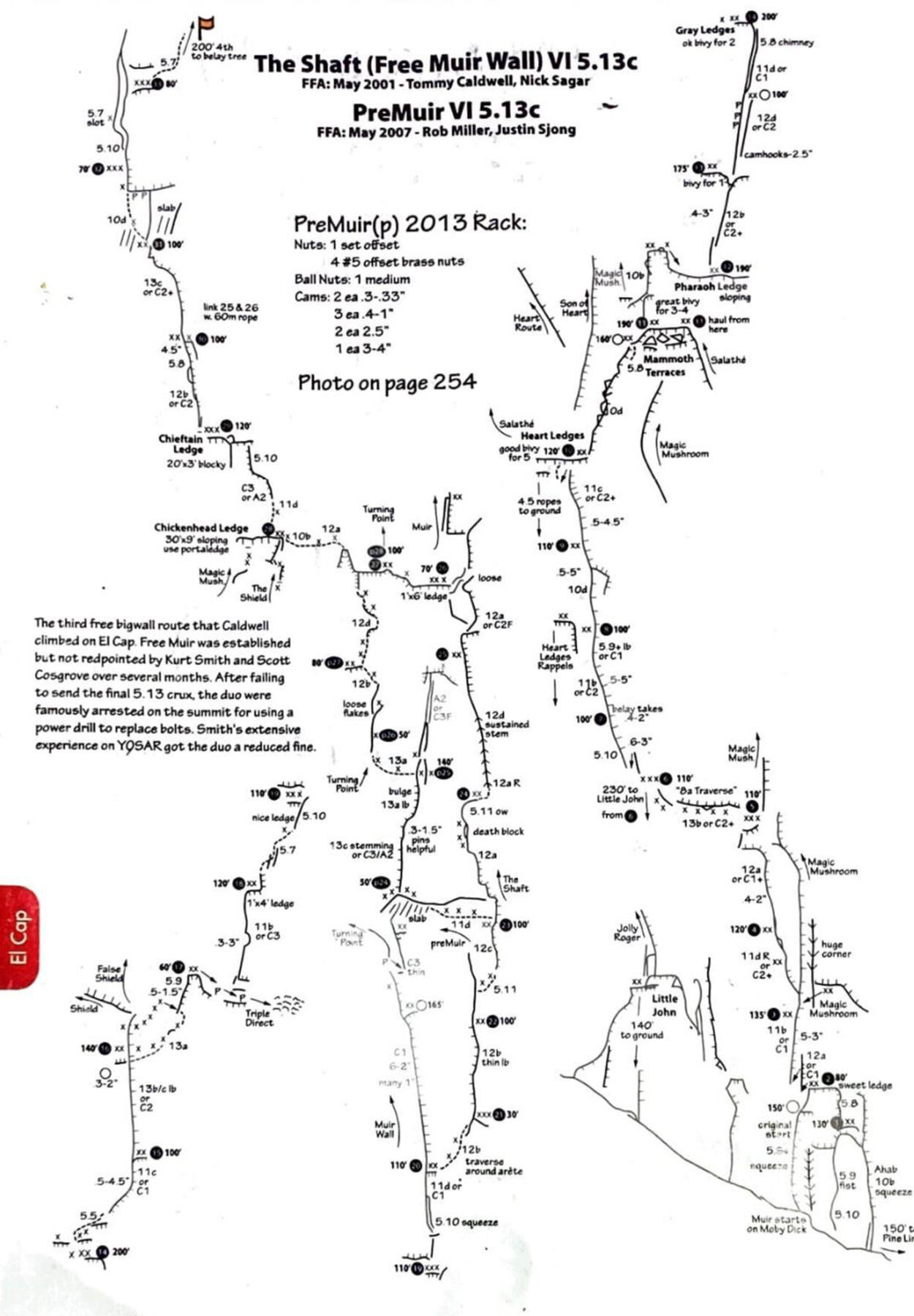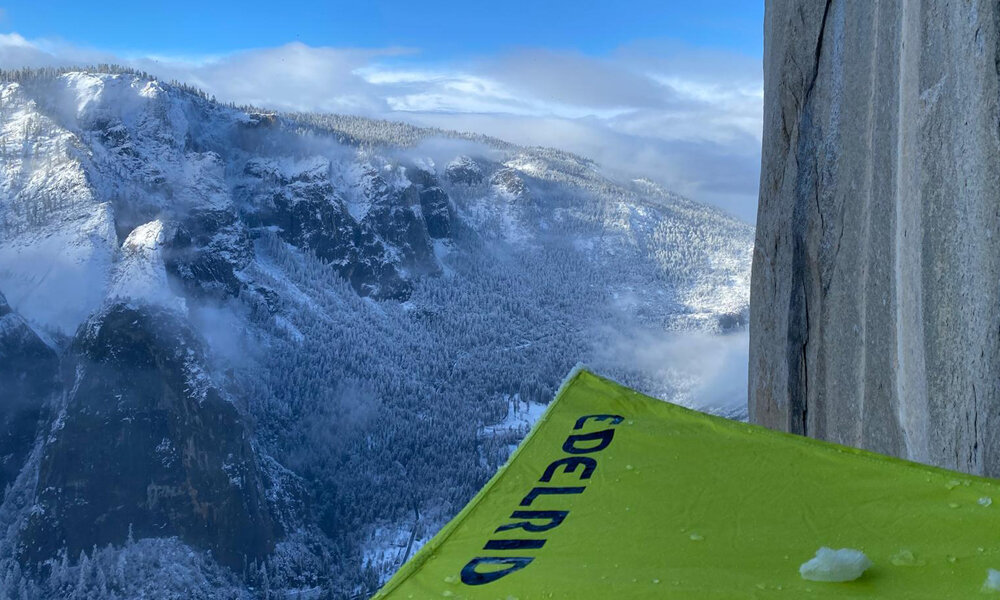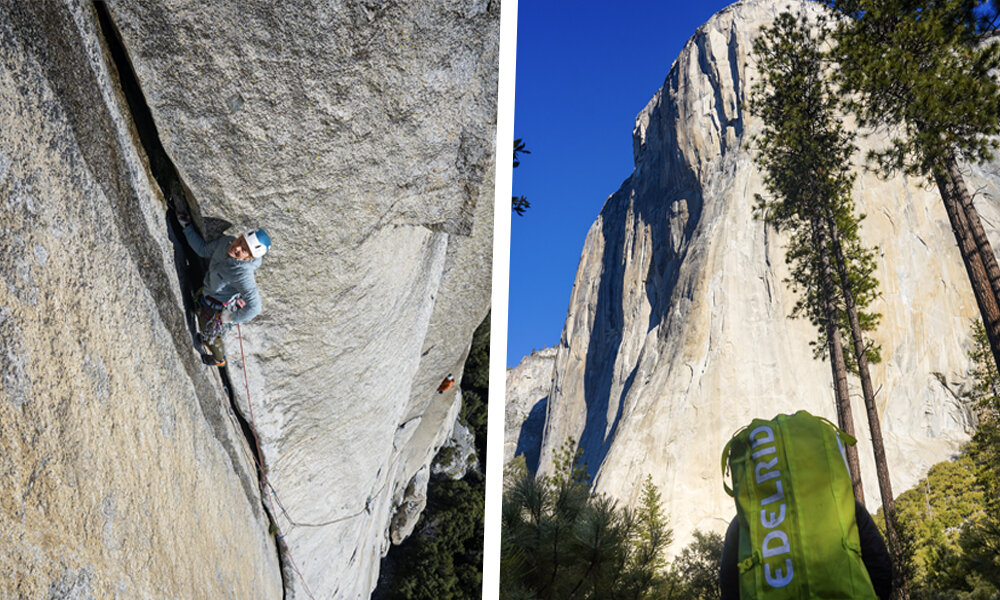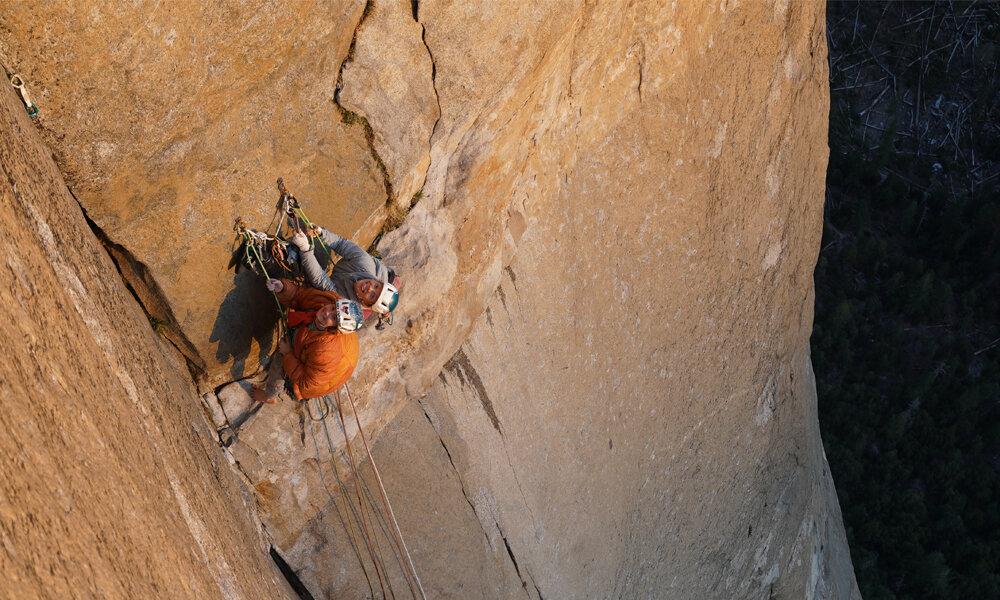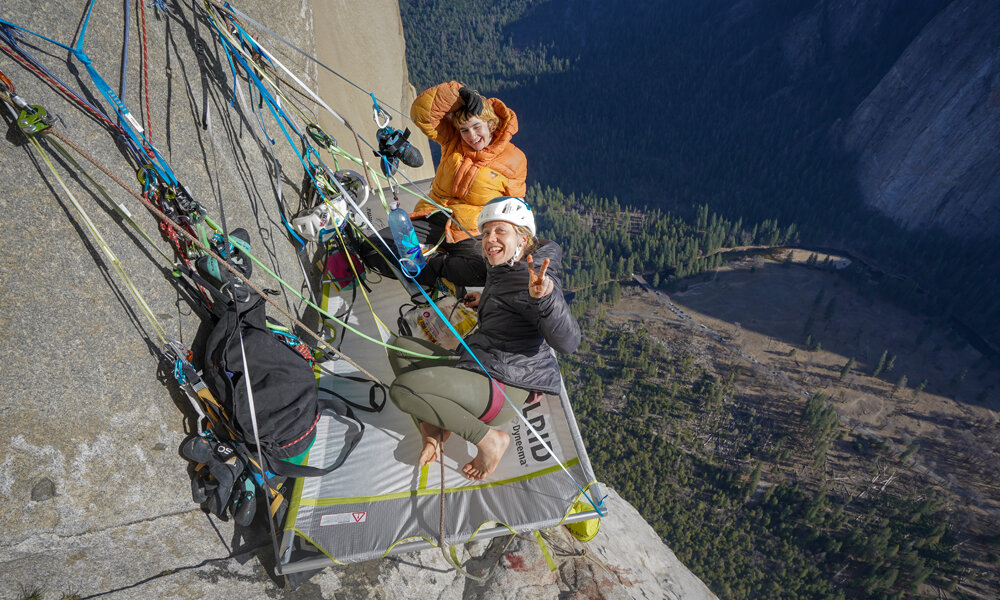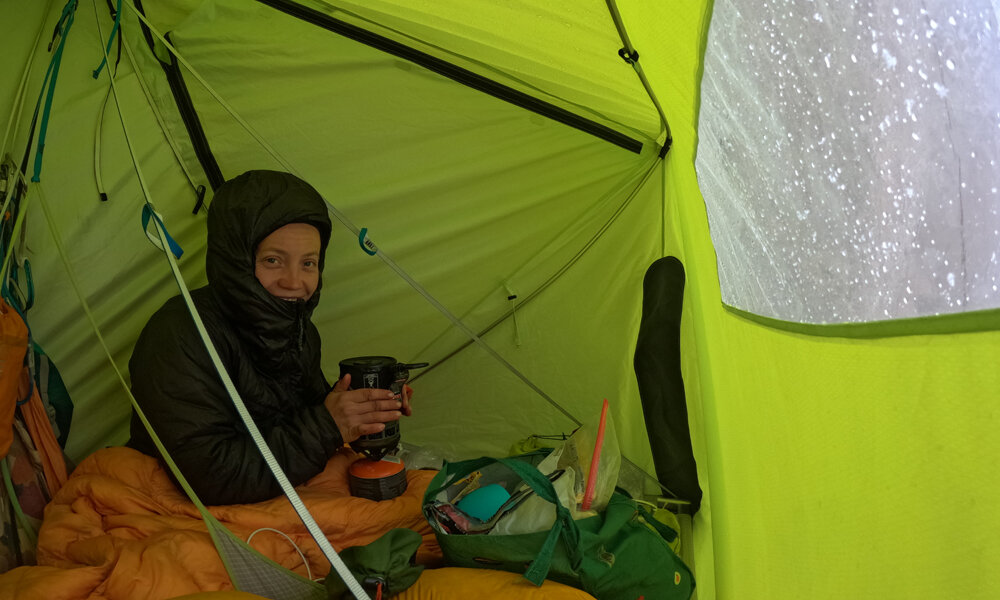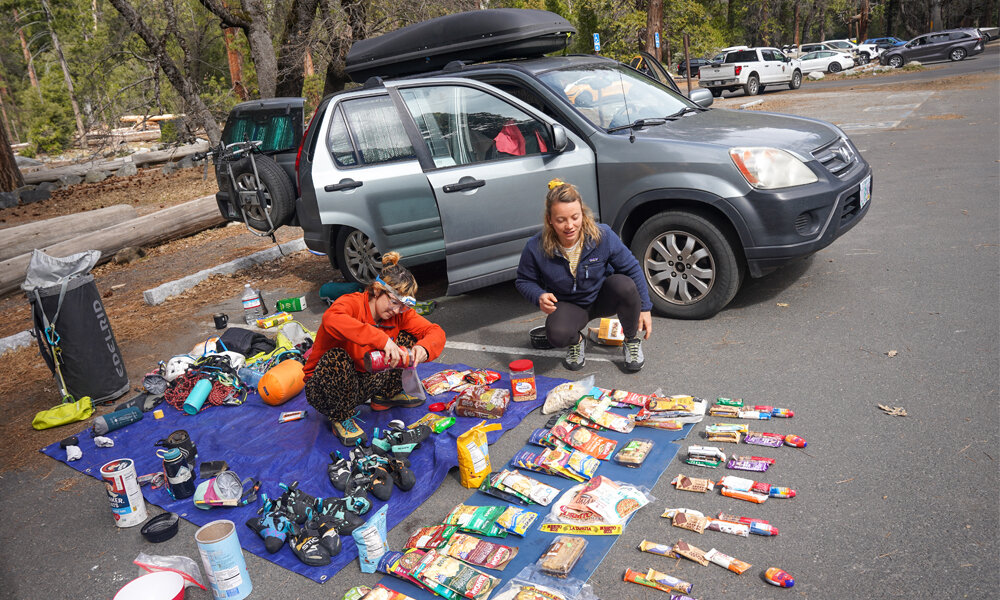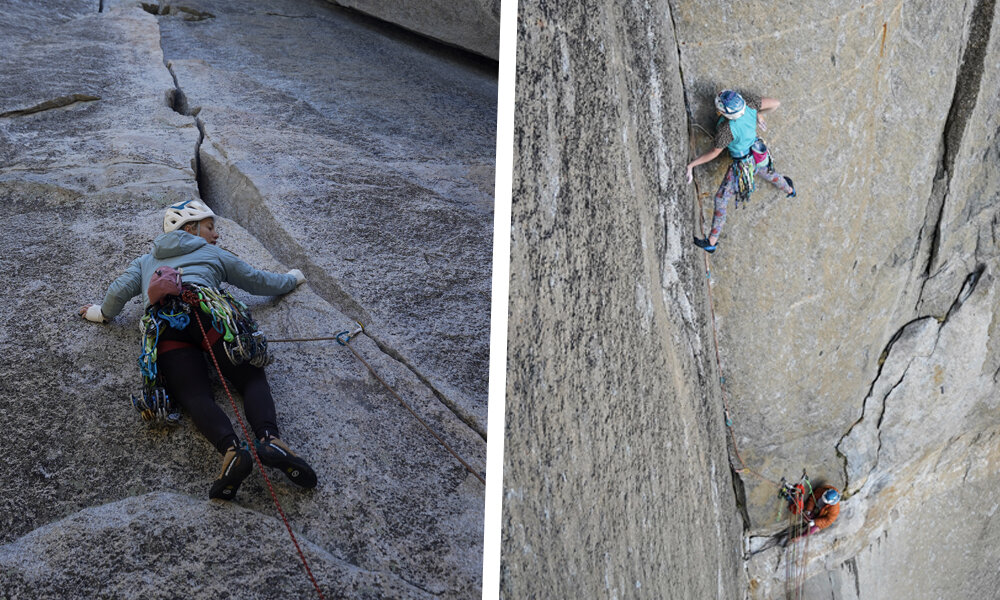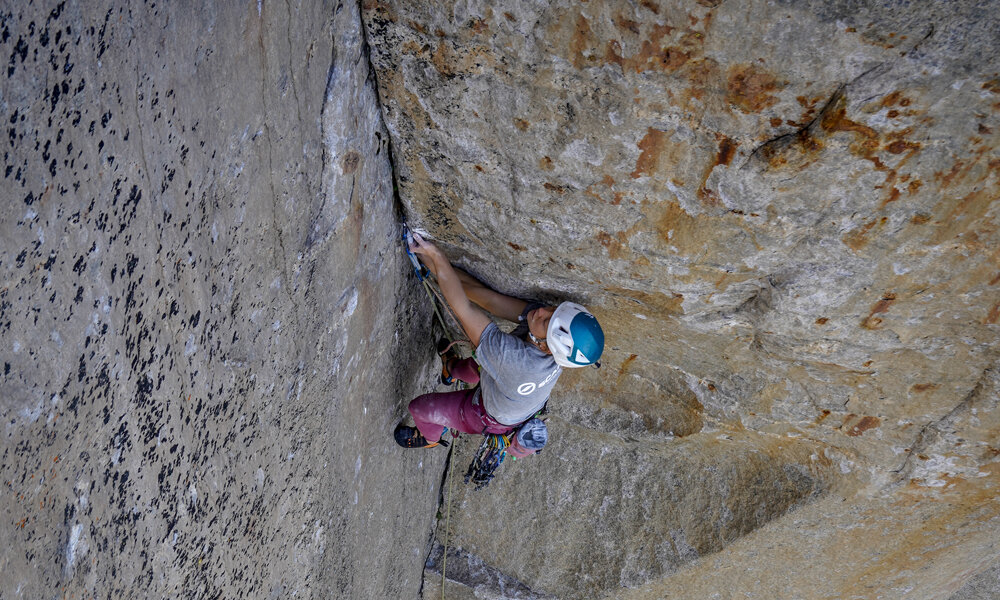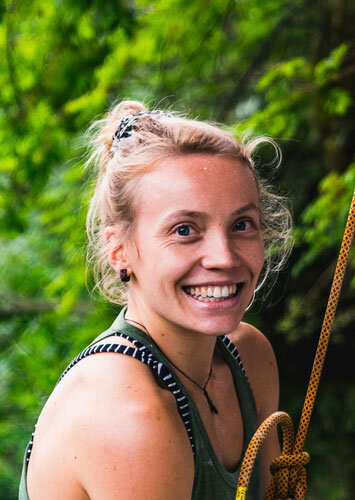The First Days on El Cap (Pitches 1-15)
The day before we started, we hauled part of our gear—portaledge, food, sleeping stuff, etc.—up the fixed ropes to Mammoth Ledge (the 11th pitch), our goal for the first day.
On the first climbing day (February 25), we managed eleven pitches. The start was tough—the first few pitches were wet, making the climbing much harder. But we pushed through. Fortunately, the 8a traverse we had previously checked was dry—and surprisingly, it was less of a struggle than the seemingly "easier" but wet pitches before. Exhausted but proud, we finally reached Mammoth Terrace, where we spent our first night on the wall.
Sleeping in the portaledge was far from restful, but it was still a special experience to wake up in the morning and realize: We’re hanging in the middle of a Big Wall.
The Second Day (February 26)
The plan for the second day was to climb pitches 12 through 16—and we stayed fall-free! The 7b+ pitch was a real challenge due to the wet conditions, but we actually got better at climbing wet cracks—haha. The 7c stem pitch was one of my favorites—lots of splits in the wide stance, just my thing. The chimney pitch afterwards also felt better than expected. The coolest part: I got to try a new offwidth technique. Although it wasn’t exactly comfortable, it worked. Despite the exhaustion, I felt strong—and with each meter, I became a little more confident.
Day 3: Silver Fish (Pitch 15) – An Emotional Battle
The Silver Fish pitch (8a+) was the biggest challenge—not only because of the already difficult climbing, but also because the upper, hard part of the route was still wet. Soline and I had checked out this pitch during our preparation and had a rough idea of what to expect. But that didn’t make it any easier.
My first attempt ended in a huge fall—probably around ten meters. In the easier middle section, I had skipped a few placements, thinking I’d reach a no-hand rest soon. But then, my foot slipped while trying to edge. The left wall was so slabby that I hit the wall with my feet first, which flipped me upside down in the harness and slammed my back hard against the rock. For a few seconds, I couldn’t breathe—I was in pure panic mode. Game over? I was afraid I’d seriously injured my back. But after calming down, I felt like I could continue. I definitely didn’t want this fall to throw me off mentally.
Soline led the pitch, and it was incredibly inspiring to watch her. I was so happy for her—but at the same time, I felt the pressure. I didn’t want to be the one holding us up. It can be challenging when one person sends the pitch while the other struggles—this is why open communication about expectations and possible scenarios beforehand is so important.
I was tense for my second attempt, still rattled from the fall, but this time I placed more gear. Even so—just before the belay, on the last hard move, I fell again. So close to sending! I couldn’t believe it. The frustration was huge. I felt completely exhausted and briefly thought about calling it a day. But quitting wasn’t an option. I wanted to try again later.
So, I reached for my tried-and-true remedy for exhaustion: a massive portion of junk food. Chips, brownies, gummy bears—whatever we had. After that, I actually felt a bit better.
On my third attempt, I fought through. My body was tired, my legs were shaking, but I forced myself to stay focused. I somehow got through the lower section, and since I now knew the upper part better, I summoned all my remaining strength—and reached the belay! I could hardly believe it myself. A tough but incredibly rewarding day. A lesson in patience, mental strength, and perseverance. Once again, I was reminded that Big Wall climbing is not only physically challenging but, above all, a huge mental challenge.

